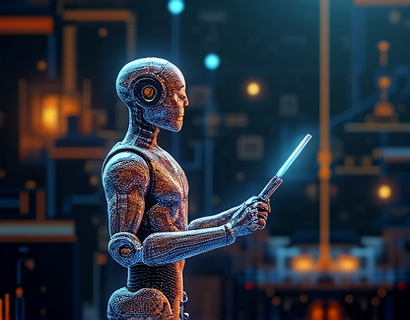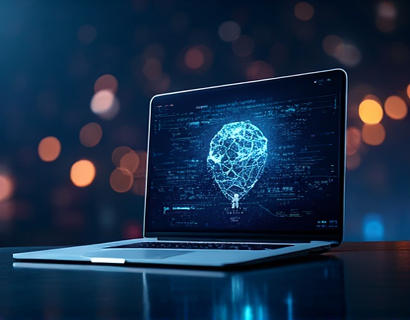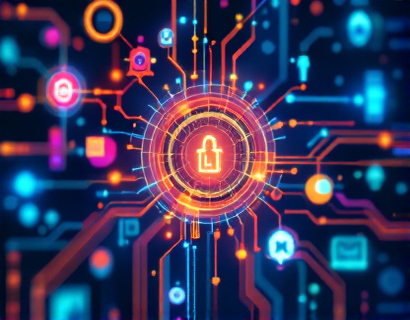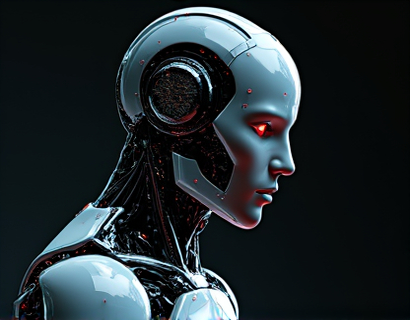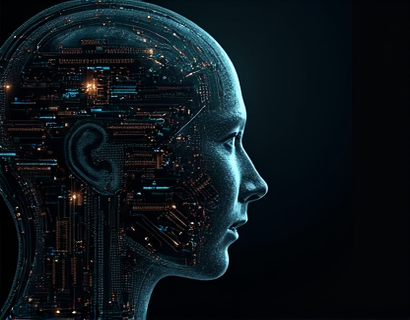Revolutionizing Digital Engagement: The Synergy of Crypto and AI
The intersection of cryptocurrency and artificial intelligence (AI) is ushering in a new era of digital engagement, transforming the way users interact with technology and redefining the boundaries of app experiences. This article explores the latest advancements in this space, offering insights and strategies for tech enthusiasts to leverage these innovations for enhanced user experiences and meaningful connections in the modern tech landscape.
Understanding the Basics: Crypto and AI
To fully appreciate the transformative power of crypto and AI, it's essential to understand the fundamentals of each. Cryptocurrency, a digital or virtual currency, uses cryptography for security and operates on a decentralized network, typically a blockchain. This decentralized nature ensures transparency, security, and reduces the need for intermediaries.
Artificial intelligence, on the other hand, involves the simulation of human intelligence in machines that are programmed to think and learn like humans. AI encompasses various technologies, including machine learning, natural language processing, and computer vision, enabling machines to perform tasks that traditionally required human intervention.
The Convergence of Crypto and AI
The convergence of crypto and AI is creating unprecedented opportunities for digital engagement. By combining the security and decentralization of blockchain with the intelligence and adaptability of AI, developers can build applications that offer enhanced security, personalized experiences, and efficient operations.
One of the key areas where crypto and AI intersect is in the realm of data privacy and security. Blockchain's immutable ledger ensures that data transactions are secure and tamper-proof, while AI can be used to detect and prevent fraudulent activities in real-time. This synergy not only protects user data but also builds trust, a critical factor in digital engagement.
Enhanced User Personalization
AI-driven algorithms can analyze vast amounts of user data to create highly personalized experiences. In the context of crypto, this means tailoring financial services and applications to individual user preferences and behaviors. For instance, AI can optimize portfolio management by predicting market trends and suggesting optimal investment strategies based on a user's risk profile and historical data.
Moreover, AI can enhance user interfaces by providing intuitive and adaptive interactions. Chatbots powered by natural language processing can offer 24/7 customer support, answering queries and guiding users through complex processes with ease. This level of personalization not only improves user satisfaction but also increases engagement and loyalty.
Decentralized Applications (DApps)
Decentralized applications, or DApps, are a prime example of how crypto and AI can transform digital experiences. DApps run on a blockchain network and are governed by smart contracts, ensuring transparency and autonomy. AI can be integrated into DApps to enhance functionality and user interaction.
For instance, AI can be used to predict user behavior within a DApp, allowing for dynamic content delivery and personalized recommendations. This can be particularly useful in gaming, where AI-driven NPCs (non-playable characters) can adapt to a player's skills, providing a more challenging and engaging experience. In financial DApps, AI can offer real-time market analysis and automated trading, making investment decisions more accessible and efficient.
Security and Trust through Blockchain and AI
Security is a paramount concern in the digital world, and the combination of blockchain and AI offers robust solutions. Blockchain's decentralized and transparent nature makes it inherently secure, while AI can enhance security measures by identifying and mitigating threats in real-time.
AI-powered security systems can monitor network activity, detect anomalies, and respond to potential threats before they become significant issues. This proactive approach to security not only protects user data but also instills confidence, a crucial element in fostering digital engagement.
Furthermore, AI can be used to verify identities and prevent fraud, ensuring that only authorized users access sensitive information. This dual approach of blockchain and AI creates a secure environment where users feel safe to engage and transact.
Optimizing Operations and Efficiency
The integration of AI in crypto-related applications can significantly optimize operations and improve efficiency. AI algorithms can automate routine tasks, reduce manual errors, and streamline processes. For example, in supply chain management, AI can predict demand, optimize inventory levels, and ensure timely delivery, all while reducing costs.
In the context of crypto, AI can enhance the performance of exchanges and wallets by optimizing transaction processing, reducing latency, and improving user experience. Smart contracts, powered by AI, can automate complex agreements and execute them with precision, reducing the need for intermediaries and lowering transaction costs.
Innovative Business Models
The synergy of crypto and AI is giving rise to innovative business models that redefine digital engagement. One such model is the tokenization of assets, where physical or digital assets are represented by tokens on a blockchain. AI can enhance this model by providing sophisticated valuation tools and market analysis, making asset management more informed and efficient.
Another innovative approach is the creation of AI-driven crypto advisory services. These services use AI to analyze market data, provide insights, and offer tailored investment advice. This democratizes access to expert-level advice, empowering users to make better investment decisions and enhancing their overall digital experience.
Challenges and Considerations
While the potential of crypto and AI is vast, there are challenges and considerations that must be addressed. Regulatory uncertainty remains a significant hurdle, as governments worldwide are still grappling with how to regulate these emerging technologies. Compliance with regulations is crucial to ensure legal operations and maintain user trust.
Another challenge is the technical complexity involved in integrating crypto and AI. Developers need a deep understanding of both domains to create robust and secure applications. Continuous education and collaboration between crypto and AI experts are essential to overcome these technical barriers.
Additionally, there is a need to address ethical concerns, such as data privacy and the potential for AI bias. Ensuring that AI algorithms are transparent and fair is vital to maintaining user trust and fostering positive digital interactions.
Future Outlook
The future of digital engagement is bright, with crypto and AI continuing to drive innovation and transformation. As technology advances, we can expect even more seamless integration of these tools, leading to more intuitive, secure, and personalized user experiences.
The rise of Web 3.0, a decentralized internet powered by blockchain, AI, and other emerging technologies, promises a new era of user-centric digital interactions. In this landscape, users will have greater control over their data, more secure transactions, and highly personalized services.
For tech enthusiasts and professionals, staying informed about the latest developments in crypto and AI is crucial. By embracing these technologies and understanding their potential, we can harness their power to create more engaging, secure, and meaningful digital experiences.






